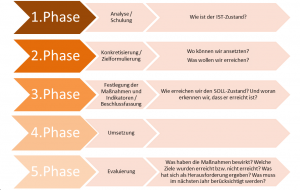There are different ways of implementing Gender Budgeting activities. They all have their very own pros and cons, there is „no one size fits all”-solution. As a consequence, both, bottom-up as well as top-down approaches can be pursued; In fact, there are a plethora of possibilities: Gender Budgeting activities can be the result of sovereign duties or imposed by private law; they may be the result of political will or democratic need as well as academic research. Also, they may take the form of formal interaction, informal one or selective measures and be targeted at any budget level – be it national, regional or local ones. Not only are the options of implementation multifold, but so are the targets to be achieved by Gender Budgeting. They may aim at pursuing economic policies (privatisation, liberalisation, public procurement), legislative measures (e.g. fighting domestic violence) or implementing soft law or socio-political ambitions (e.g. gender equality measures etc)
The Austrian way, which is based on performance goals, does not seek to cover the entire budget. Rather it highlights performance budgeting. Selective priorities are meant to implement certain measures; decisions and resources spent in this regard will be displayed transparently.
Looking at the example of a municipality discussing its budget: How will it implement Gender Budgeting? – It will analyse its budget, determine (gender equality) targets, specify them, define measures based on these targets and make visible any decisions reached in this regard as well as any resources spent for this purpose. As such, one may distinguish between 4-5 phases.

Step 1: Analysis
The analysis revolves around gender-specific questions and disparities as well as their root causes.
Questions to be asked: What is the initial situation like?
To assess the initial situation, it is necessary to collect data.
Key questions might be:
What do we spend our money on?
How much of this money is allocated to women, how much to men, either directly or indirectly?
Are there any differences? Where and why?
In which areas is action required?
Step 2: Determining gender equality objectives, measures and indicators
In a second step, gender equality objectives are defined as well as indicators by which to assess that goals have been reached. They should be as concrete and verifiable as possible. Measures, programmes and projects are being planned and conceived at this stage as well.
Questions:
Where can we start?
What do we want to acheive?
How do we achieve the target state; which measures shall be taken?
How can we tell that the target state has been achieved?
Step 3: Implementation
As a third step, the measures, programmes and projects defined in Step 2 will be carried out.
Step 4: Evaluation
The fourth step features assessment and documentation of any results and progress as to the gender equality objectives defined in the beginning. It is being analysed to which degree the target state has been achieved by using the indicators laid down in Step 2.
Questions:
- What has been achieved by these measures (impact)?
- Which objectives have been achieved, which have not?
- Which were the challenges?
- What must be taken account of next year?
Further FAQ:
Gender Budgeting – What’s that?
Gender Budgeting – Just another trend? How has it developed?
Gender Budgeting – Who is practising it?
Gender Budgeting – What does all that terminology mean?